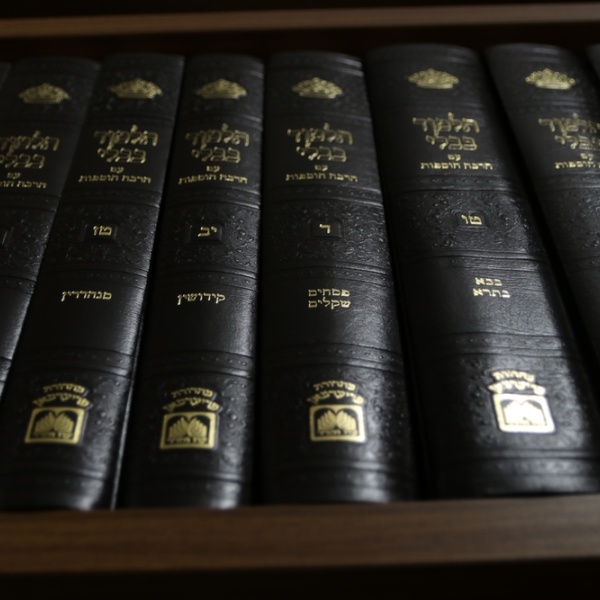
One of the fascinating features of the Talmud is how it seamlessly moves from topic to topic. The opening Mishnah of Moed Katan teaches that amongst the permitted activities on Chol Hamoed is to “mark the graves”, thus helping people to avoid impurity--something especially important at Yom Tov time. The Gemara asserts that this law is rooted in the Bible, and quotes various proof texts to demonstrate such; the last proof being “and to him who orders his way, v'sham derech, will I show the salvation of G-d” (Tehillim 50:23). We are to direct people onto the correct path--in this case, avoiding any graves.
The Gemara then derives from this verse another seemingly unrelated teaching. “Rav Yanai had a student who every day would question him; on the Shabbat of the holidays, he refrained from questioning him. Rav Yanai applied to him the verse, ‘And to him who orders his way will I show the salvation of G-d’” (Moed Katan 5a).
While people were often too busy during the week to learn, no such excuse could be offered on Shabbat or Yom Tov. Attending the Shabbat afternoon shiur was considered so important the Sages actually issued a decree prohibiting private Torah study on Shabbat afternoon, lest one stay home to learn Torah and not attend the public shiur.
It was this increased attendance that explains why Rav Yanai’s student did not question him. Many, if not most, of these Shabbat/Yom Tov attendees did not regularly attend Rav Yanai’s shiurim. The student--who, most tellingly, remains unnamed--was afraid that if he “stumped” his teacher, asking questions that Rav Yanai could not answer, it could cause Rav Yanai great embarrassment. He refrained from asking questions, from challenging his teacher--something most essential for one to do if one aspires to become a Torah scholar himself--even though the shiur was less developed thereby, and perhaps even imprecise. It was, and is, more important that the teacher not be potentially embarrassed, even if some Torah is left unexplored and unlearned. For those who regularly attended the shiur, the odd question left unanswered would cause no embarrassment. But if the one day that many guests are there is the day one stumps the teacher, the risk is high--not to mention the fear that the guests may not come back again. Rav Yanai applied the verse v'sham derech, the path to salvation is knowing when to ask and when not to ask--when one can challenge others, and when to lay back so that no embarrassment comes to others.
This idea is codified in Jewish law, which prohibits a student from asking a question on a topic unrelated to the one under discussion. Tosafot goes so far as to say of one who asks questions with the intention of showing up his teacher, “it would have been better had he not been created” (Brachot 17a, s.v. haoseh shelo lishma). The teaching that “thirty days before a holiday one asks and seeks in the matters of the festival” is an admonition to rabbis and teachers that they must be prepared for any and all questions relating to the holiday thirty days beforehand.
The Maharsha offers a very different and most fascinating interpretation of the student’s behavior. He, too, agrees that this changed behavior resulted from increased attendance at the shiur. Yet it was not fear of embarrassing the teacher, but the nature of the shiur itself that led to the paucity of questions. With so many people in attendance, many of whom were not steeped in learning, Rav Yanai gave a very different type of shiur on Yom Tov. Instead of analyzing complex legal topics--something that allowed and encouraged much debate and questioning--he spoke devarim p'shutim, simple matters that were easily understood by all. Much like a derasha, first and foremost, is meant to inspire, whereas a shiur is focused on teaching, Rav Yanai understood that Yom Tov afternoon was not the time for a complex shiur, but rather easily understood words of Torah. His regular students did not ask questions because there was little to ask. And despite the fact that it was unlikely they would learn anything new, the regular students came to “shiur”. They understood that Torah learning is much more than acquiring knowledge. It is by taking that path--literally, by walking to shul to hear the shiur--by having all join together that leads to salvation.
A discussion about marking graves so that we avoid any contact with death on the festivals turns into a discussion of all coming together to learn Torah, the Torah that is “our life and the length of our days”.
